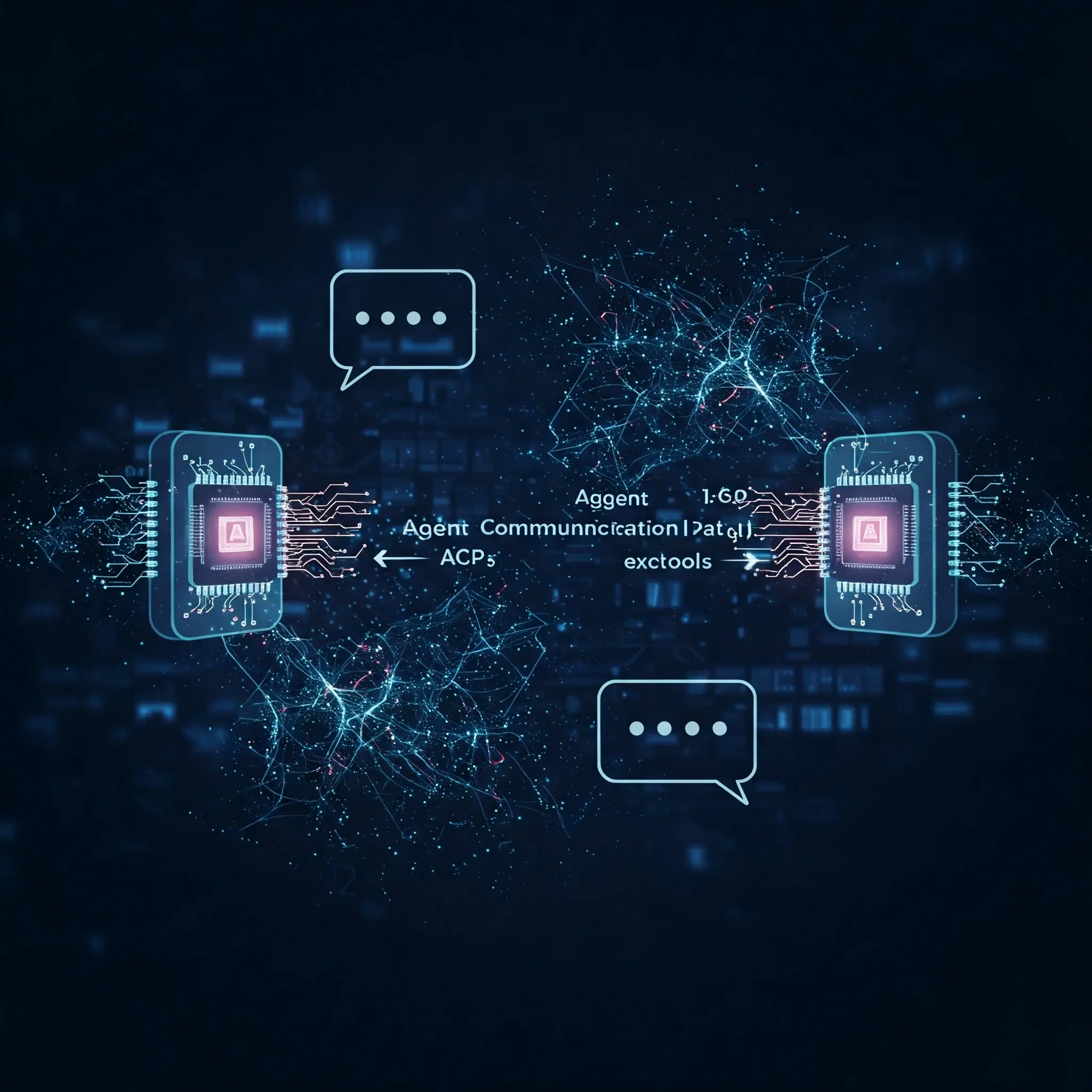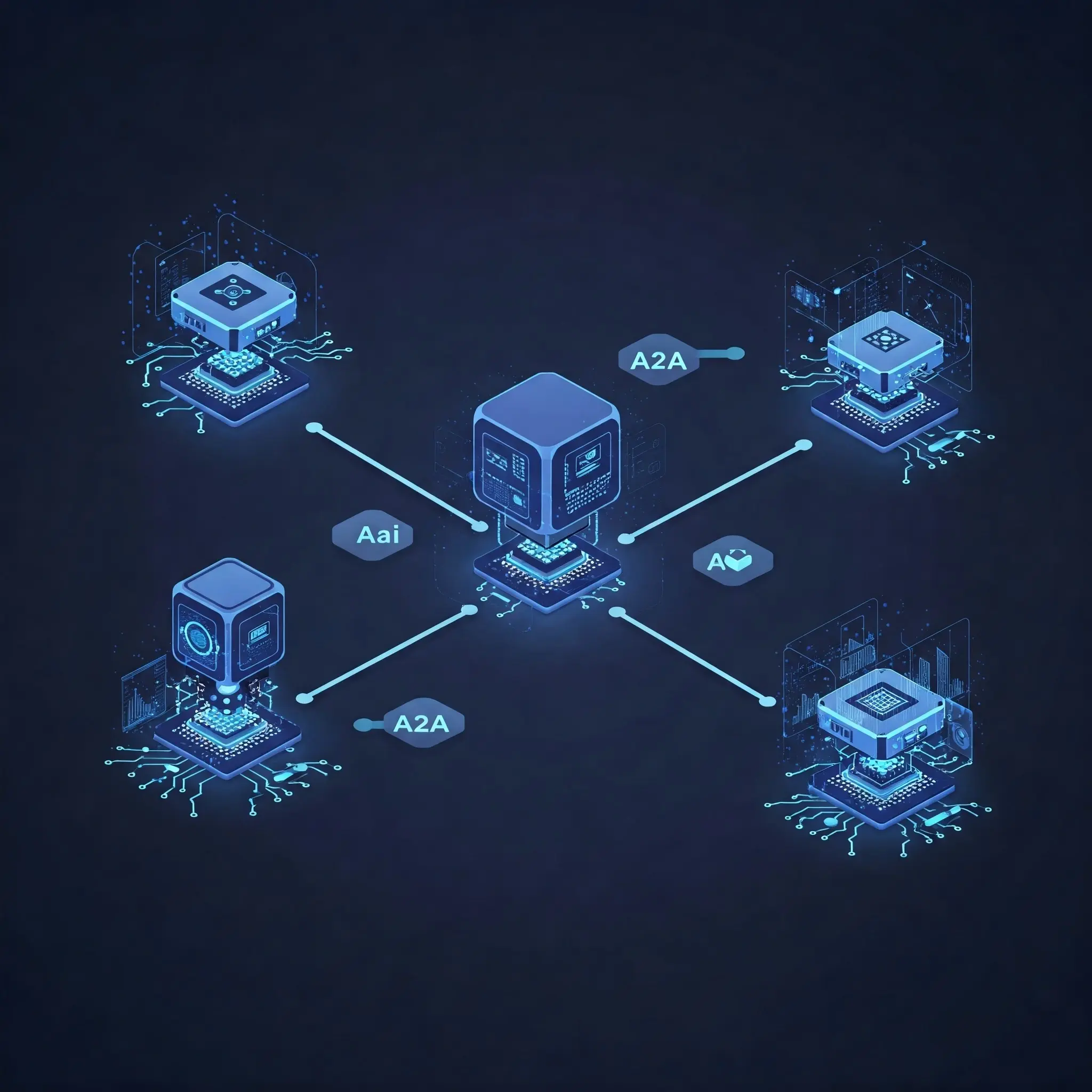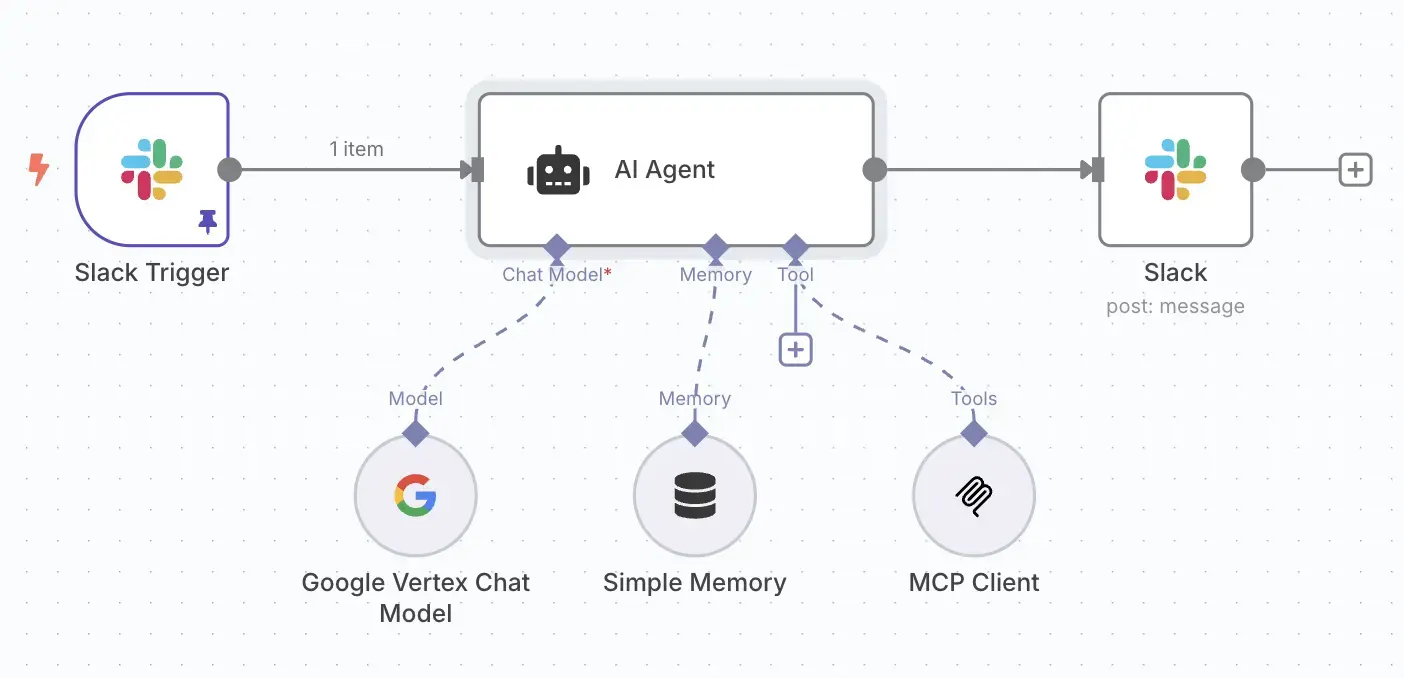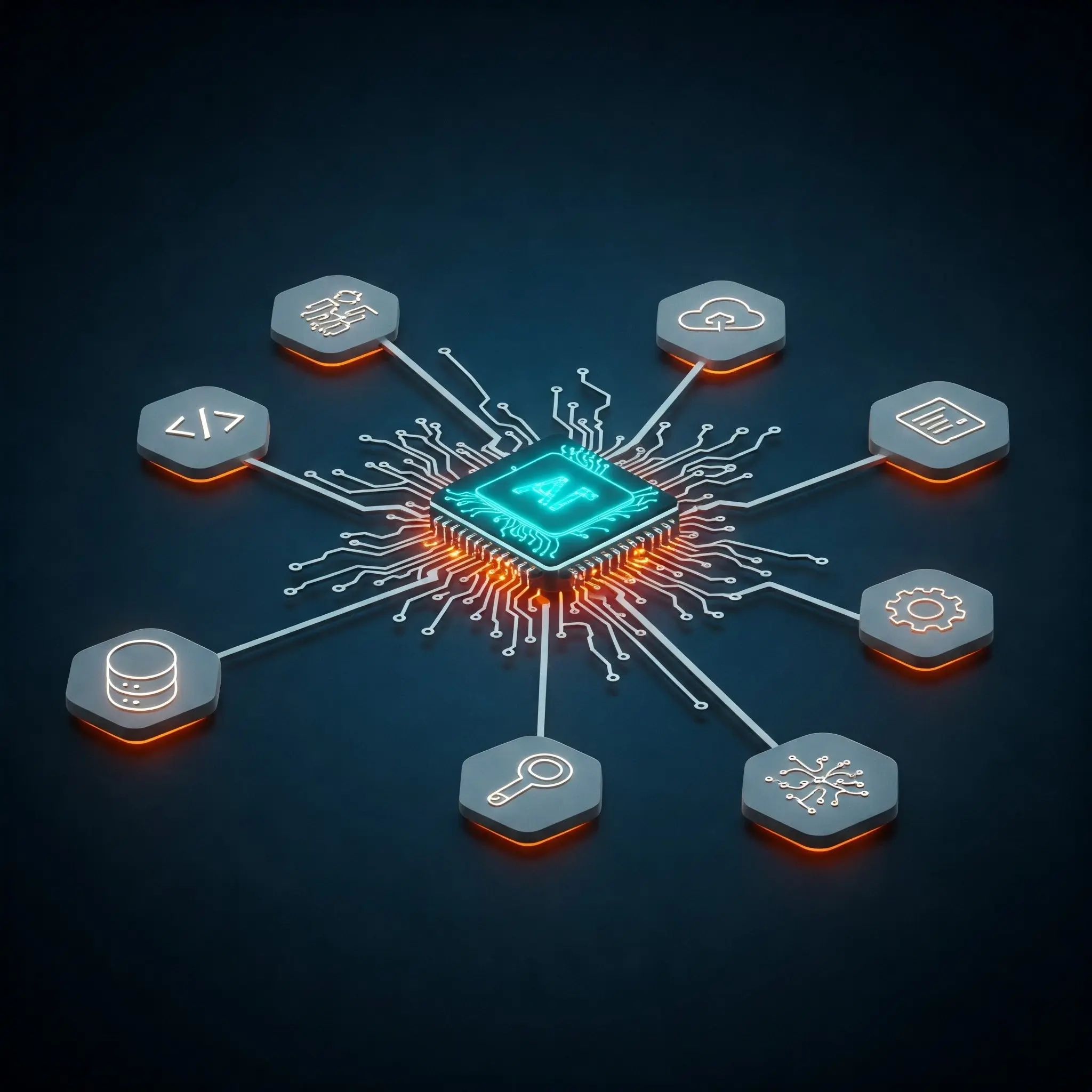
Agents in Dialogue Part 2: ACPs - The Foundational Languages of Agent Collaboration
Agents in Dialogue Part 2 of 3: ACPs - The Foundational Languages of Agent Colla…

In the previous articles of this series, we first explored the Model Context Protocol (MCP), which standardises how AI agents connect to external tools and data. We then explored Agent Communication Protocols (ACPs), which is used for direct agent-to-agent dialogue. This article focuses on the Agent2Agent (A2A) Protocol, a modern initiative designed to meet this critical demand to enable the orchestration of sophisticated AI agent teams.
Catch up on the series:
Like this series?
We dive deeper into AI-native architecture, agents, and systems thinking every week in our weekly newsletter Waves of Innovation. ---
The Agent2Agent (A2A) protocol is a modern, open standard, prominently initiated and driven by Google, designed to facilitate seamless communication and collaboration among AI agents. Its core objective is to enable these agents—regardless of the underlying frameworks they are built on, the platforms they are hosted on, or the vendors who developed them—to securely discover one another, exchange information, and coordinate their actions effectively. In essence, the A2A protocol aims to provide AI agents with a "common language," allowing them to transcend proprietary boundaries and work together in a cohesive manner.1
The primary motivation behind the A2A protocol is to remove the communication problems that often exist between different AI agents within an enterprise or across the broader AI ecosystem. It empowers agents to collaborate on complex tasks that necessitate the combined expertise of multiple specialised entities. A key distinction is that A2A focuses on "agent interoperability"—how agents talk to each other, rather than "tool interoperability," which is the principal domain of protocols like MCP. By standardising inter-agent communication, A2A enables the dynamic assembly of multi-agent solutions, where tasks can be flexibly matched to the most suitable agents available.2
The A2A protocol is built upon a set of core design principles and architectural concepts that define how agents interact.
Design Principles: The A2A protocol adheres to five fundamental design principles that shape its architecture and capabilities:
Core Concepts & Interaction Flow: The A2A protocol defines several core concepts and a typical interaction flow for agent collaboration:
/.well-known/agent.json): This is a crucial component for agent discovery. An Agent Card is a machine-readable metadata file, typically published at a well-known URL, that describes a remote agent's capabilities. This includes its name, description, skills, the communication modalities it supports (e.g., text, audio), endpoint URL, and authentication requirements. Client agents use these cards to find suitable remote agents for specific tasks.submitted, working, input-required (if the remote agent needs more information from the client), completed, failed, or canceled. Tasks are typically initiated using methods like tasks/send or tasks/sendSubscribe.TextPart for plain text, FilePart for files (which can be sent inline or via a URI), and DataPart for structured JSON data (e.g., for forms or other structured information exchange).tasks/sendSubscribe method. The client then receives Server-Sent Events (SSE) containing TaskStatusUpdateEvent messages (providing real-time progress updates) or TaskArtifactUpdateEvent messages (delivering artifacts as they become available).tasks/pushNotification/set.Typical Flow: A common interaction pattern involves the following steps:
tasks/send (for synchronous-style interaction) or tasks/sendSubscribe (for streaming updates).input-required state, the client agent can send subsequent messages with further information using the same Task ID.completed and any associated Artifacts) and sends it back to the client agent.3The A2A protocol is designed to enable a wide variety of collaborative AI scenarios:
The A2A protocol is being driven by Google, which has launched the initiative with support from over 50 industry partners, including major technology vendors and service providers. This broad backing indicates significant interest in establishing a common standard for inter-agent communication. The open nature of the protocol has also encouraged community contributions, with sample implementations and integrations emerging for popular AI frameworks like LlamaIndex, Autogen, and PydanticAI.4 Notably, Microsoft has also announced support for A2A within its Semantic Kernel framework, further bolstering its potential for widespread adoption.6
The design of the A2A protocol inherently encourages a microservices-like architecture for building AI systems. Individual agents, in this model, function as specialised, independently deployable services that communicate over a standardised network protocol. The way agents expose their capabilities through Agent Cards and accept tasks is analogous to how microservices expose APIs. The emphasis on agents being potentially "opaque" (i.e., their internal workings are not necessarily known to other agents) and possibly originating from different vendors aligns perfectly with the microservice principles of loose coupling and independent development. This architectural style is increasingly seen as critical for constructing complex AI systems that are scalable, resilient, and maintainable over time.
However, while A2A provides the standardised "language" for agent collaboration, the "logistics" of managing interactions in very large-scale agent ecosystems present further considerations. By default, A2A interactions often rely on point-to-point HTTP connections. As the number of agents (N) in a system grows, the potential number of direct connections can increase dramatically (roughly N-squared), potentially leading to a highly complex and brittle communication web. In such scenarios, complementary architectural patterns, like event meshes or message queuing systems (e.g., using Apache Kafka), might be necessary. An event mesh 7 or a Kafka-like backbone 8 can decouple agents, enable publish/subscribe communication patterns, improve overall system scalability, and provide durable, asynchronous communication. These patterns can address some of the limitations of purely point-to-point A2A communication when deployed at massive scale, effectively enhancing how A2A messages are delivered and managed within a large, dynamic ecosystem, while A2A itself defines what is being communicated.
Understanding the individual roles of the Model Context Protocol (MCP), the Agent Communication Protocol (ACP) from the BeeAI/IBM initiative, and Google's Agent2Agent (A2A) Protocol is crucial. Their true power and significance emerge when considering how they differ, coexist, and complement each other within the broader landscape of AI agent communication.
These protocols, while all concerned with communication in AI systems, serve distinct but sometimes overlapping or complementary functions:
MCP (for agent-to-tool/resource) and protocols like A2A or the IBM/BeeAI ACP (for agent-to-agent) are not competitors; rather, they are designed to be highly complementary, addressing different layers or aspects of an AI agent's interaction needs.
A common way to delineate their roles is: A2A/ACP are for agents talking to each other, while MCP is for agents talking to their tools and data sources. In a complex multi-agent system, agents might use A2A or ACP to coordinate a high-level plan, negotiate responsibilities, or delegate sub-tasks. Subsequently, each individual agent might then use MCP to interact with specific services, databases, or APIs required to execute its assigned part of the overall plan. An illustrative example is a sophisticated loan processing system. A primary "Loan Orchestration Agent" could use A2A (or ACP if within that ecosystem) to communicate with a "Risk Assessment Agent" and a "Compliance Verification Agent." The Risk Assessment Agent, in turn, might use MCP to connect to a credit scoring API (a tool) and access historical financial data (a resource). Similarly, the Compliance Verification Agent could use MCP to query regulatory databases. The results from these MCP interactions would then be communicated back to the respective agents, and potentially shared or reported to the Loan Orchestration Agent via A2A/ACP. This combination facilitates a powerful, layered architecture. It allows for a clear separation of concerns: agents can operate at a higher level of abstraction when collaborating with peers (using A2A or ACP), while still possessing standardised and efficient access to the granular functionalities and data they need from the external world (via MCP). This modularity is key to building more capable, scalable, and maintainable AI systems.
The following table offers a comparative overview to clearly distinguish the primary roles and characteristics of MCP, the IBM/BeeAI ACP, and Google's A2A Protocol:
Table 2: MCP vs. ACP (IBM/BeeAI) vs. A2A (Google) – Distinct Roles, Powerful Synergy
| Feature | Model Context Protocol (MCP) | Agent Communication Protocol (ACP - IBM/BeeAI)11 | Agent2Agent (A2A) Protocol (Google) |
|---|---|---|---|
| Primary Focus | Agent-to-Tool/Resource Communication | Agent-to-Agent Communication | Agent-to-Agent Communication |
| Analogy/Aim | "USB-C port for AI" | Standardized RESTful API for agent interoperability, especially within BeeAI ecosystem | "Common language for AI teams" |
| Key Function | Standardises how AI agents discover, access, and use external tools & data sources | Enables agents from different frameworks to collaborate via RESTful API, supporting sync/async/streaming | Enables autonomous AI agents to discover (via Agent Cards), communicate, and collaborate on tasks |
| Developed By (Initiator) | Anthropic16 | IBM Research / BeeAI Community (Linux Foundation project) | |
| Core Interaction Pattern | Client-Server; AI (client) invokes tools/resources on MCP server | RESTful API calls between agents (services) | Peer-to-Peer (conceptually); Client Agent requests tasks from Remote Agent Server |
| Key Standards Used | JSON-RPC 2.0, HTTP, SSE (for remote) | RESTful HTTP, supports sync/async/streaming. (JSON-RPC over HTTP/WebSockets also mentioned)14 | HTTP, JSON-RPC, Server-Sent Events (SSE), OpenAPI-like auth |
| Discovery Mechanism | tools/list method within established connection18 | Manifest-based offline discovery | Agent Card (/.well-known/agent.json) |
| Ecosystem Focus | Connecting AI models to any tool/service | Interoperability within BeeAI and connectable agent frameworks13 | Broad interoperability across diverse agent platforms and vendors |
To vividly demonstrate the practical synergy between these protocols, consider a hypothetical complex task: automated enterprise market analysis and strategy proposal generation.
tasks/send.This scenario illustrates how protocols like A2A or the IBM/BeeAI ACP provide the framework for high-level coordination and task delegation among autonomous agents, while MCP empowers those agents with standardised access to the diverse array of tools and data sources required to perform their specialised functions.
The development and adoption of protocols like MCP, the IBM/BeeAI ACP, and Google's A2A Protocol are not merely academic exercises or niche technical advancements. They represent critical enablers for the evolution of artificial intelligence from collections of standalone models into sophisticated, integrated, and collaborative ecosystems.9 Standardisation in communication is paramount for lowering the barriers to entry for intelligent automation and for fostering the creation of AI-native platforms that are inherently more composable, adaptive, and secure by design.
These communication frameworks are paving the way for the development of true multi-agent systems, where the capabilities of individual agents can be dynamically discovered, composed, and extended to tackle problems of increasing complexity. By enabling agents to collaborate effectively across organisational, platform, and vendor boundaries, these protocols are facilitating more complex and autonomous decision-making processes and task execution sequences.12
The widespread adoption of such open and standardised protocols could potentially lead to the emergence of an "AI service economy." In this vision, specialised AI agents could offer their unique capabilities to other agents, much like businesses offer services today. Discovery mechanisms like A2A's Agent Card or ACP's manifest-based discovery function akin to service advertisements. If agents can reliably and securely discover and interact, regardless of origin, it fosters innovation. Concurrently, MCP's standardisation of tool usage simplifies consumption of backend services. This dynamic mirrors how web APIs catalysed the digital service economy. Considerations around billing and cost models for agent interactions within the A2A community hint at this future.21
For those involved in designing, building, or leading the development of AI systems, several key takeaways emerge:
The Model Context Protocol, along with emerging agent-to-agent standards like the IBM/BeeAI Agent Communication Protocol and Google's Agent2Agent Protocol, are more than just technical specifications. They are fundamental enablers of a future where intelligent agents can communicate, coordinate, and collaborate with unprecedented seamlessness. By providing the common languages and interaction frameworks these agents need, these protocols are instrumental in unlocking new levels of automation, efficiency, and innovation across a multitude of domains. As AI continues its inexorable advance, the ability of its constituent parts to engage in meaningful dialogue will be a defining characteristic of its ultimate impact.
If you found this useful,
We explore topics like agent systems, AI Native architecture, and organizational design every week in Waves of Innovation.
It’s free, in-depth, and written by the same team behind this series.
---

Agents in Dialogue Part 2 of 3: ACPs - The Foundational Languages of Agent Colla…

A Deep Dive into Building a Slack-to-Atlassian AI Chatbot with n8n, MCP, and Kub…

Agents in Dialogue Part 1 of 3: MCP - The Universal Connector for AI and its Too…
Get a shared vocabulary of proven Transformation Patterns, common Anti-Patterns, and Paradigm Patterns to have more effective, data-driven conversations about your strategy and architecture.
For a personalized starting point, take our free online assessment. Your results will give you a detailed report on your current maturity and suggest the most relevant patterns to focus on first.
Every Tuesday, we deliver one short, powerful read on AI Native to help you lead better, adapt faster, and build smarter—based on decades of experience helping teams transform for real.